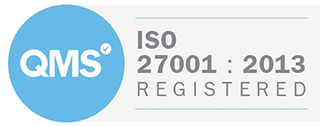
There are now less than two months to go until the introduction of the Government’s mandatory National Living Wage.
From April 1st the new National Minimum Wage rates (including the ‘National Living Wage’ for over-25’s) will be:
- £3.30 for an apprentice
- £3.87 for employees under 18
- £5.30 for employees aged 18-21
- £6.70 for employees aged 21-25
- £7.20 for employees aged over 25
There has been a mixed reaction to the higher minimum wage for employees, in particular about the cost to business, but there are two key things to remember:
- The mandatory National Living Wage set by George Osbourne is still lower than the actual Living Wage of £8.25 (£9.40 for London), which is set by Loughborough University’s Centre for Research in Social Policy.
- Following recent rate rises it was predicted that the National Minimum Wage would have risen to around £7.00 per hour for over 25’s this year anyway.
A Department for Business, Innovations and Skills (BIS) survey from December 2015 asked 1,000 employers about their preparations for the wage rise. 93% agreed that the incoming rise was a good thing, whilst 83% stated that it will increase employee loyalty.
Yet the survey also found that only 45% of these businesses had updated their payroll systems accordingly. Meanwhile just 39% had spoken to employees who will be affected by the rise. Whilst these percentages should have risen since December, these low rates do raise concerns that employers are not taking their responsibilities seriously.
So what do you need to think about when planning for the National Living Wage?
Key factors to consider include:
- The impact on payroll (outright costs and annual budgeting).
- The impact on recruitment policies.
- How the new minimum wage will affect existing pay scales. Are new pay scales needed?
- Employee relations issues that new/revised pay scales may cause.
The new minimum wage rates will affect some sectors more than others. A November 2015 report found that 20% of employers will be affected; however a drill down into the results finds this figure rising to 33% and 32% respectively for the retail and hospitality sectors. This comes as little surprise given that these sectors were found to have the lowest median hourly earnings in April 2015.
Of course, there are also the penalties for non-compliance to consider. Whilst this will be managed much as it has been for the minimum wage, the actual penalties available to HMRC will be tougher on employers.
The National Living Wage is a step in the right direction for wages parity, but it is not without short-term challenges. Understanding your obligations and the effect on your business will be key to ensuring a smooth transition this April.








